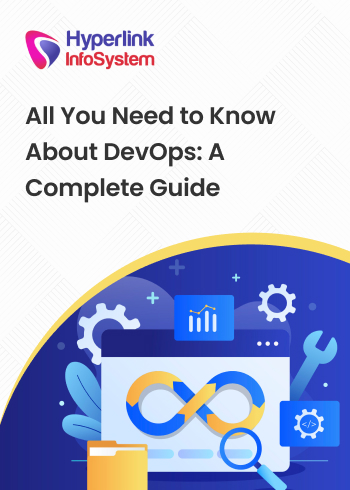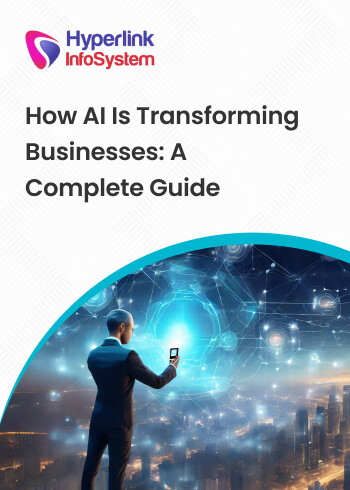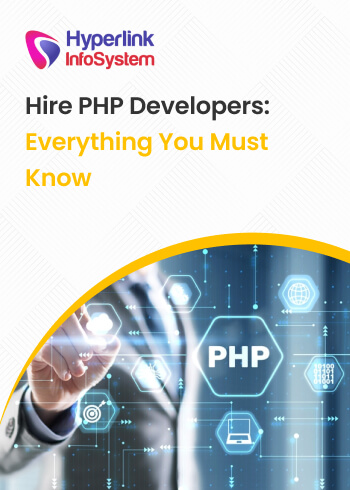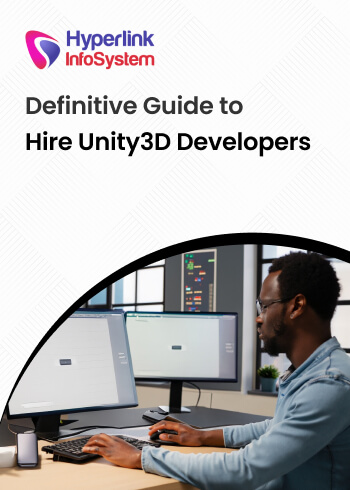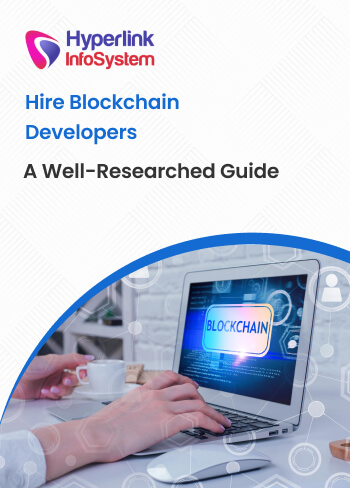If you've ever been on online tech- forums or read tech magazines, you've likely come across the abbreviation API. This does sound good, but what does that mean, and why do you have to bother? Let's begin with a simple example: contact with people.
Our feelings, desires, and thoughts can be conveyed by words (written and spoken), movements, or body language. Device, application, and website interaction includes components of the user interface—a display with a toolbar and visual elements, a mouse, and a keyboard.
Software or its components can interact with one another without a graphical user interface. Software products swap information and feature through machine-readable interfaces called application programming interfaces or APIs.
What is an API?
An API is a collection of computing code that allows the transmission of data between two different software products. It also includes the conditions of that transfer of data. The following are the two elements of APIs:
-
Technical standard defining the data sharing possibilities between solutions in the shape of a processing and data transmission protocols request
-
Computer interface written according to the specification it serves
The software that requires retrieving information (such as the rates of a hotel room on specific days) or features (i.e., a path from one point to another on a user location map) from another program, contacts its API when defining the data/features specifications. The other program returns the requested data/functionality from the previous task.
What the API defines is the mechanism by which these two applications interact. The
API guide is a developer's manual that contains all the required details on the ways of working with the API and utilizing the services it offers.
Every API includes and is enforced via function calls-statements of language that allow the software to execute specific services and actions.
APIs have a great many functions. They can usually simplify and accelerate
software development. Programmers may incorporate functionality into existing solutions from other providers, or use third-party services to create new applications. Specialists need not struggle with source code in any of these situations. They don’t need to try and understand how the other approach works. They just link up their software to one another.
Learning With APIs - APIs In Education
Learning is a form of teamwork. Parents, teachers, and students are the main players. However, better outcomes can be obtained by increasingly providing the team with better equipment (materials, strategies, and data). Facilitating communication, access to knowledge, and insights as to what works and what does not work on an individual basis are the latest resources offered by APIs to improve educational performance - not just for students, but also for organizations that support education. Following are some of the ways APIs are used in the
Education industry.
Mobile Application Development
The following are the basic capabilities offered in the Education industry:
-
Basic APIs: Class features and definitions, content databases, search help for students or researchers
-
Custom APIs: Organize planning/management, financial assistance, transactions and data to improve customized training. Correspond strengths of students and expected workplace needs, then allocate learning routes, custom job support etc.
Advantages of mobile include training anywhere/anytime
Educational organizations can utilize APIs to build an outstanding student experience by ensuring more mobile, interactive, and personalized learning. This will help optimize the learning outcomes as well as ensure that graduating students and those currently unemployed get the career support they require to be successful in the workplace.
In addition to aiding the development of mobile applications, APIs can help educators in the following ways.
Partnering
This includes assisting the willingness of educators to provide cross-offers for the curriculum and provide funding to ensure access to educational resources for researchers.
Students can be prepared for post-education jobs through collaborations with HR firms. Additionally, you can integrate educational deals with the work opportunities that would require that form of education. And, in turn, you can help employers identify candidates with the right experience in education. Finally, there is an opportunity to develop applications that equate work requirements with education specifications and classes taken.
Public APIs
In addition to the usual use cases of product comparison forms, finding cloud-based education promotions is becoming increasingly common.
Social
Enabling cooperation (between teachers/parents/students) in a social network will assist all parties in ensuring success for the students. A social network will help establish an interactive learning and teaching atmosphere between teachers to increase interaction, motivation, and sharing of best practices.
Using APIs, it is also possible to promote student accomplishments and education through contests or gamification. Moreover, business communications integration with LinkedIn is also most often achieved by means of APIs.
Devices
The use of alternative technologies will provide support for education, and APIs can be used to communicate with the technologies. All students are not equally equipped to learn in a traditional classroom. Therefore, the use of technology provides alternative forms of learning that help less-abled students as well.
Students will be educated in future classes by offering the correct learning atmosphere for each pupil. APIs will push responsive functionality while sensors in the classroom (which will also use APIs) will classify each student.
Data
Analytics is used to collect data based on the form of training from social, digital, and student accomplishments. The analytics is then utilized to help teachers achieve the most successful instructional approach. Analytics obtained through APIs provides students at risk with predictive modeling while teachers get insights into the progress of the students.
Educational organizations use APIs to boost their own market performance and the performance of the students. APIs are used to foster a positive student experience and help teachers achieve the most successful mode of education. Controls should be placed around the APIs to attain this performance. This will allow you to find out who utilizes the APIs and how much and then relate that to the tests. For that visibility, the analytics can be used to assess which strategies function and which do not.
How API Technology Is Changing Education?
With university costs plummeting, numerous people cannot afford higher education. While it does not necessarily ensure a degree, online education offers expanded accessibility at competitive rates not previously accessible. Through online courses and websites running on APIs, those who have not had the opportunity to go to college will learn useful skills.
APIs also advance science and education by presenting current data to researchers and making available the latest scientific findings. Following are some of the main ways API technology is changing education.
Education is Made More Accessible by APIs
Online training services such as Khan Academy and Knewton use APIs. These include playlists, mind maps, videos, and more. As Khan Academy is creating open-source APIs, schools can integrate the APIs from Khan Academy into their curricula. This helps these educational institutions to provide their students with services that they would not otherwise have been able to afford.
Academic Research is shared by APIs
Academia was very selective, and it was only professors and scholars had had access to most of the information. With APIs, scholars are able to share their knowledge with both the public and other researchers. APIs may be used to build applications that provide knowledge accessibility and gather information from other sources.
Information is Standardized by APIs
Formalized knowledge is especially important in fields such as the sciences, where breakthroughs are being continuously made. APIs give researchers access to the latest experimental findings. This provides them with the latest scientific information which helps them to be more educated and work quickly.
How eLearning is Being Revolutionized by Virtual Classroom APIs
In recent times, the eLearning market has seen exponential growth, as organizations have pursued ways to minimize costs while providing a high-quality, personalized education for today's students. Some commentators foresee progress over the next five years as eLearning technology evolves and
consumer needs continue to increase.
The existence of sophisticated application program interfaces (APIs) in the education field is one of the key growth factors of eLearning adoption. Using APIs enables teachers or organizations to readily draw on the advanced features that online classrooms and other key virtual learning technologies offer. Due to the numerous diverse advantages it provides, API integration is changing the eLearning industry as a whole and this is no exaggeration.
Before we start, exploring the ways in which APIs are being implemented and the benefits they provide, let's quickly review how APIs work, and their vital supporting role in the current web framework.
Review of API Basics
Although APIs have been around for more than half a century, they have started gaining increased attention only recently. There is a good reason for this. APIs today act as the foundation of digital interactions now taken for granted by consumers. They are ubiquitous and play an important technological role in most digital functions. If you are downloading software, ordering food for delivery, renting a car, or doing just about any other typical web operation, you are likely to connect with an API.
Ever searched for the best available fares using a travel website? If you have, then you’d have an idea of how an API functions.
In order to determine the different flight or hotel room rates as well as their availability, the website communicates with hundreds, if not thousands, of APIs from different airlines or hotels. The findings are then smoothly filled in on your phone.
APIs have a wide range of uses. The uses for APIs are incredibly wide. Businesses can incorporate third-party APIs to enhance the functionality of their products. A financial institution could, for example, use the API of an external vendor to allow cardless financial transactions. Thus, businesses that create innovative new technology or services may collaborate with other organizations that aim to enhance their own customer or B2B offerings. Each of these can be achieved by actually implementing an API.
Having addressed the value of the APIs today, let's quickly take a look at how eLearning is being changed by this technology.
The Relation between APIs and the Ongoing Revolution of eLearning
We have described how APIs can be incorporated into a website or application in a clear and easy way to allow new functionality and improve the performance of existing frameworks and tools. The following is an example of how this can happen in the e-learning context.
Assume you are a website-based instructor or teacher and would like to improve your services. You can organize and administer live classes by incorporating a virtual classroom API and giving your students access to a powerful set of educational tools. These tools include:
-
Text-based chats and other social features
-
Premium quality audio and video communication in real-time
-
Course materials optimized for mobile
-
The option to directly upload material from a website
-
Tracking attendance and automatic progress monitoring
-
The ability to use API capabilities to create multiple teacher accounts
-
The use of sophisticated whiteboard technology
Including features like these helps to make the student experience more social, interactive and enjoyable. This is the key when it comes to achieving better outcomes.
Today, the online-classroom APIs also allow integration to be a quick, seamless operation. You do not have to download or update any apps. Just a click of a few keys and the majority of the APIs can be added to a learning management system, a course management system, or a platform. Some of the other common characteristics include the ability to manage anything with a single tab and the ability to connect with a single sign-on. There is no need for students, instructors, and teachers to deal with several log-in IDs.
The Role and Strength of APIs in Online Learning
Virtual learning has a proven success story. Remote learning sessions during the Covid-19 pandemic have demonstrated that students do well with an online or hybrid approach.
Before the pandemic, Not everybody had access to online learning resources, or the ability to use them properly. High costs and a lack of knowledge served as barriers to entry, especially for smaller businesses, startups, or independent trainers.
Luckily, the success of APIs in the sense of eLearning has helped alleviate those worries. Now educators can reap the benefits of some of the most effective tools in the learning technology industry with quick, web-based integration. Since the integration process is so clear and smooth, any technological functionality issues can be overcome. Teachers who use existing websites or networks will dramatically improve their eLearning skills.
In this way, online-classroom APIs are empowering teachers and students to make eLearning more available, more powerful, and more efficient. By making innovative resources like online classrooms more widely accessible, APIs help educators develop their services (and business) while at the same time helping students accomplish their educational objectives.
The Gist
E-learning provides a number of transformative advantages: accessibility, tailored learning, greater productivity, deeper interaction, and improved results, just to name a few. Such advantages are proven by the rapid growth in the online learning industry.
This progress is almost certain to continue, owing to the existence of sophisticated online classroom APIs. With incredible convenience, teachers can incorporate APIs into their websites or forum, increasing the capacity of these resources enormously. The opportunity to instruct live from an established setup — with all of an online classroom's advantages and features — is an extremely enticing prospect for both teachers and students alike. Since sophisticated online classroom APIs are so easy to set up and use, it's never been easier to maximize the value of online learning.
As APIs become much more sophisticated in the coming years, eLearning will become more available, more powerful, and more efficient — and this is a blend that should fascinate everyone.
How API Is Benefiting Higher Education
Higher education institutions have spent extensively on electronic information systems over the last decade to provide their students, professors, management, and other stakeholders with fresh and creative online experiences.
However, as the volume of technologies implemented grows, IT departments are working relentlessly to incorporate and maintain the increasing number of systems and apps on-premise or in the cloud, whether traditional or new. As an added bonus to this challenge, many universities and colleges have extended their presence both physically and electronically, offering online courses and distance learning either through digital channels and/or partners and representative bureaus.
All of this has left many organizations with a labyrinth of point-to-point or direct integrations, hampering efficacy and productivity – key components of quality education.
End-to-End Integration with API
Getting the numerous HE institution's systems together to handle a myriad of areas – services, personnel, equipment, and payment processes – into one robust, integrated system will not only save money and time but it will also significantly improve the experience of users.
Application programming interfaces (APIs) provide a medium for linking parts of
computer application software. They allow IT departments to access their backend data and features from within different departmental silos and legacy structures, for usage in the interpretation of experiences and the creation of new application services.
With an automation approach to the API, IT teams can remove many current and potential bottlenecks, and become more effective by eliminating technological debt and allowing IT departments to support themselves. Integration led by API in universities and colleges means the following:
-
Using a single username and password to access a variety of systems and applications.
-
Increased ROI from efficiently linking new applications with existing systems at the organization, providing a single user experience.
-
Efficient management by simple implementation of an event-based flow of knowledge over the overall student life cycle.
-
360 ° visibility of student's spanning learning, health, accommodation, and financial networks.
The Lesson Learned
Integration systems operated by APIs will help simplify processes, provide an improved student experience, and boost fundraising and enrollment. Around the same time, they will greatly reduce the expense and energy expended on entering information manually, repeating tasks, or processing data. Within the HE, a sector where efficiency and expertise are measured as the main selection criteria, the efficiencies gained by switching to a fully integrated setting would have a direct effect on improving all the relevant metrics.
Cases Studies of APIs in Higher Education and Research
There are several excellent examples of APIs in use in higher education and research and even outside of them. However, the following are examples of some of the APIs in use in higher education and research.
Phone Directory of the University of Lincoln
Lincoln established a registry of employees that used APIs to construct a customer-facing corporate service focused on available data. Due to their experience over the past few years in building a wide pool of API-exposed datasets, they were able to test a new directory of workers in less than 48 hours, utilizing APIs to extract data from different sources inside the organization.
Instead of needing a time-consuming and expensive approval process to construct a system from the scratch and manually fill it with data, they have been able to easily integrate existing technology and conduct a search across a variety of datasets. The data was also released as Linked Software and submitted to website, enhancing
dedicated developers' access and usability further.
Many current APIs have been used to extract data from a number of internal sources, including local WordPress instance staff profiles, EPrints data, and local LDAP data. This allowed the consolidation of different kinds of data, such as course and bibliographic information, student demographics, room location, and more. Data is now easily accessible through a central platform that students, employees, and others can use to support data for new projects.
University of British Columbia
University of British Columbia (UBC) introduced an API to strengthen their Student Information Services (SIS), which deal with their institutional reporting requirements and strengthen data protection.
After an episode in Vancouver where a UBC laptop holding confidential data was abandoned on a train, senior management pushed for greater control over the data transfer. As a consequence, the Enterprise Architecture community called for the reform of current business procedures and IT systems to use APIs, promoting and endorsing better data management practices that could minimize the risk of loss of data.
UBC was able to use APIs to standardize their processes after extensive business process review, as well as automate several routine reporting tasks. This combined with access rights management facilitated better control and increased productivity for data-sharing activities.
For example, applications for lists of students about to graduate in November used to take as long as a week due to their dependency on more than a thousand different reports being produced, exchanged, and combined. The integration of API made it possible to securely examined and distributed on the same day, with dramatically reduced administrative costs and less potential for manual error.
The university is also trying to collaborate with partners outside. For instance, all students of UBC receive a local transit pass every month, which requires communication of enrolment data with transportation companies and the Transit Authority. Direct access can now be provided safely and effectively through well-managed APIs, reducing the costs of administration on both sides.
Mendeley
Like other internet-based startups, Mendeley, which supplies researchers with networking and bibliographic tools, has made APIs an integral part of its business operation. Their API was launched with extraordinary hype. This included a competition for developers to propose new features and applications for significant rewards.
As fundamental types of tool, Mendeley's API provides links to writers, articles, publications, and annotations. The list may be identical to that of other colleges or universities’ fundamental resources. Hence, releasing identical APIs for use by their students and employees (and others) to do innovative and fascinating things that favor not just themselves, but also their colleagues, their school, and society as a whole could be possible for a college or university.
Eventbrite
Eventbrite is among the most common apps for managing facilities, bookings, and booking online events. Their API reveals some of the benefits of an algorithmic approach to information management, allowing additional apps to incorporate booking data and further boost functionality. By contemplating how to coordinate and reveal their knowledge in a similar manner, many universities might profit.
When designing other programs, disclosing information about the level of interaction with activities such as public lectures through an API may provide a valuable and reusable tool. For instance, a combination of institutional marketing information, event attendant/lecture data, and room booking data may be utilized to build a monitoring framework that will notify the organization of new business prospects, in the shape of offering desirable courses or research programs.
The Top 20 Education APIs In 2026
Technology in education is transforming how teachers teach and how students learn. With education becoming increasingly tech-savvy, there is a need for better resources to enable teacher's and student's interoperability and productivity. Programmers are now looking to build apps that are appropriate for classroom use, and they are looking to find the best APIs for their "EdTech" apps in the Programmable Web Education category. Following are the top 20 Education APIs in use today.
1. GreatSchools
A non-profit organization, GreatSchools offers educational guidance and parenting tools to help families select the right school, as well as encourage home learning. The GreatSchools API helps people to locate schools in the area by entering the full address, city name, or zip code. The API can provide data about any school, including reports of test scores from students or other users.
2. DonorsChose
An online charity for schools, DonorsChoose.org allows U.S. public school teachers to submit requests for project resources on the organization’s website and users may donate any sum to a chosen project. When a project achieves its fundraising target, DonorsChoose will supply the resources to the school. The DonorsChoose API Track enables programmers to bring classroom project lists from DonorsChoose.org into their website or app and allows app users to donate to projects or buy gift cards.
3. Google Classroom
An online tool, the Google Classroom API can be used by teachers to develop, coordinate, and rate assignments without the use of paper. The Google Classroom API enables users to incorporate data concerning classes, passwords, invites, students, instructors, and individual users. This API utilizes REST control and OAuth 2.0 access for Classroom network management of students, instructors, and student rosters.
4. Khan Academy API
An online resource that provides free educational tools, Khan Academy includes more than three thousand two hundred online videos spanning subjects from economics and physics to mathematics and art. The Khan Academy API provides programmers with access to almost all of the playlist-categorized information stored on the web, where users can explore videos or get knowledge about the assignments for each. The API also provides badge award details through the exercise dashboard. The API approaches are broken down into themes, images, drills, user data, and badges.
5. Quizlet Flashcards
A study website that uses flashcards to teach, Quizlet Flashcards has over seven million flashcard sets and about two million registered users. The Quizlet API allows programmers to utilize Quizlet's more than two hundred million flashcards database which covers every subject virtually. The API allows users to download, scan, submit, and modify flashcard sets, scan for definitions, create, update, and enter groups, mark sets as favorites, and more.
6. Knewton
Knewton has tailored its learning framework to the requirements of individual students, offering personalized courses in LSAT, GMAT, and SAT. This API enables programmers to access Knewton's own data for other apps and systems, such as marking and teaching procedures that can adjust to the demands or needs of students.
7. WizIQ Virtual Classroom
WizIQ provides interactive online learning resources like online classrooms, pupil recruitment software, and processes for collecting payments. Using the WizIQ API, programmers can link WizIQ with their learning management system, CMS, or website. The API's accessible features include holding live classes for multiple users, taking part, posting and handling content, and more. The API utilizes RESTful calls, and XML types replies.
8. EnGrade
EnGrade brings together over three million staff, professors, pupils, and their guardians. Using electronic learning resources such as flashcards, grade books, electronic quizzes, and encrypted messaging, this API enables programmers to combine tools for class management with a student reference page.
9. OpenEd API
OpenEd utilizes machine learning to match teaching resources with learning principles such as TEKS, NGSS, Common Core State Standards, and comprehensive conceptual frameworks of delectable learning goals (from ACT, Renaissance, and more). OpenEd was developed to encourage K-12 teachers' use of educational tools to achieve better outcomes on standardized tests.
The OpenEd API provides information about resource search, participation, and requirements. Content producers can submit high-quality K-12 resources to OpenEd through the OpenEd API. On the other hand, educational technology providers can ask the OpenEd API for feedback on resources.
10. Clever
Clever is a tool for organizing files. It helps programmers in school and software management along with information on students. It offers various functionalities like data analysis, organization, integration, security, data recovery, and more.
11. Microsoft Graph Education API
The Microsoft Graph enables Microsoft cloud service to reveal several APIs from a single REST endpoint, which includes educational APIs. The Microsoft Graph Education API includes mechanisms for administering specific Office 365 tools and data including classrooms, colleges, users, tasks, entries, students, instructors, courses, and enrollments. Additionally, the API can be utilized for school roster management.
12. Europeana
Europeana enables users to explore the digital resources of the libraries, audio-visual collections, archives, and museums of Europe. It also enables users to create applications that could view Europeana metadata collections.
13. Opendata.Education
Opendata.education offers open data for programmers concerning the UK education sector. The API provides feedback from the Edubase (School Community and Children Centre’s Links) database in XML or JSON format, as well as applications for freedom of information. Get info with the API about schools like community information, full name, specific reference number, LA numbers, and more.
14. Schoology
It is a social network and a learning management system that enables the development and distribution of instructional material used in the K-12 levels as well as in higher education. This API enables programmers to monitor and reuse the data of users and students for other websites.
15. Blackboard
Blackboard Learn is created to help business, K-12, government, and higher education educators interact with students on whatever tools they use. The Blackboard Learn API enables programmers to control ads, lessons, material, subscriptions to courses, grades of courses, sources of data, and more. It enables users to create content for the course, hold conversations, submit targeted updates, and utilize analytics to monitor the progress of the students.
16. WorldCat
WorldCat is a selection of more than seventy-two thousand databases from over hundred and seventy countries. This API enables the program to search the WorldCat collection comprising thousands of member repositories worldwide, including electronic material, personal records, music, bibliographic records, images, and books.
17. Assembly Platform API
Assembly Platform integrates the data systems and information for school administration with other tools for education. The Assembly Project API incorporates data collection into the framework for educational purposes.
18. Library of Congress
Based in Washington D.C, the U.S. National Library is the official library and research center of the U.S. It has the biggest and oldest library collections on the planet. The API uses query/retrieval methods through URL, which is a typical Internet search query protocol.
19. OCBC Education Calculator
OCBC is a Singapore-based provider of banking and financial services. The OCBC Education Calculator API calculates the level of student education. Programmers can invoke the application with a chain of query variables using the HTTP GET method, obtaining answers as a JSON data object. Some characteristics include approximate cost and years of schooling, overall savings, and amount of investment.
20. Kami Embedding
Kami is an application that schools can use for document annotation. The Kami Embedding API, much like an electronic paper and pen, lets users at schools communicate in real-time by exchanging PDF files and documentation. The API allows users to post a document to Kami so that it can be used for embedding. It also helps users to access and view documents and document data.
Conclusion
The top 20 APIs for education are listed above. These APIs are recommended because they are the most trusted APIs in the education industry. They are widely trusted because they help not just students, but also teachers, parents, educational institutions, and other stakeholders in the education industry with a great learning resource to transform the learning/education experience for all. They do this through great online applications that meet the needs and demands of the modern-day education industry.
Our Review Process
Our writers spent more than 15 hours researching APIs, the basics of
mobile application development capabilities offered by them in the education industry, the ways in which API is changing education and revolutionizing eLearning, and the best education APIs in use today. To come up with the information and statistics presented above, they read through the research of top sites and considered 40 of the most trusted APIs in the education industry. This research process makes the information provided by us trustworthy.

.jpg)
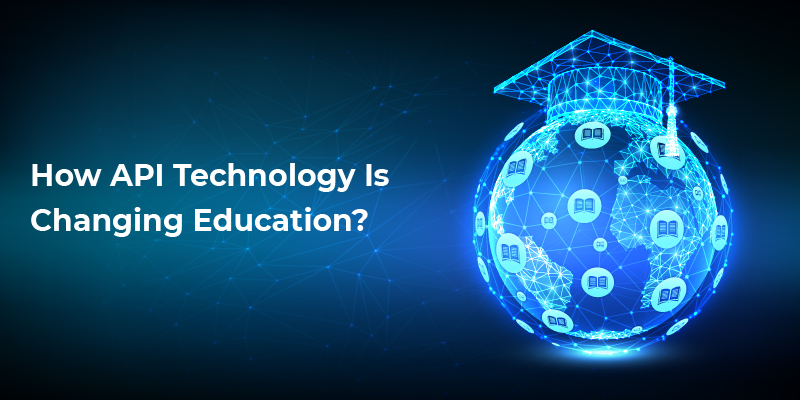
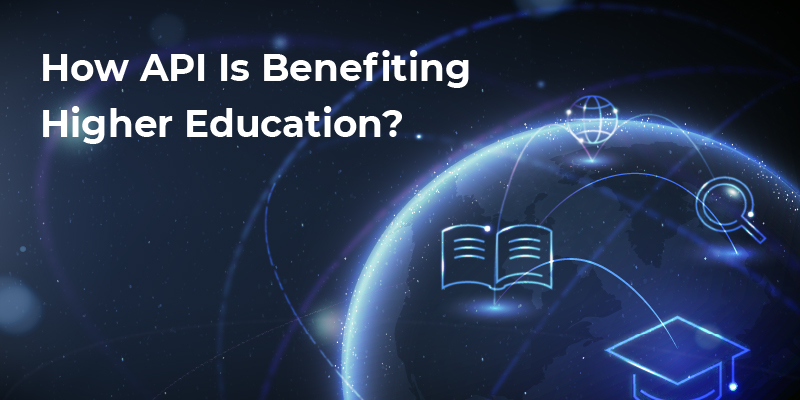












.png)







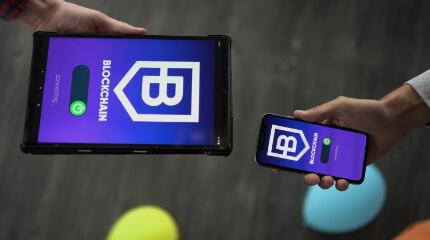
















 Next
Next